A McKinleyville Community Forest access point, located up Murray Road about two miles past McKinleyville High School. Photo: James Richards
For McKinleyville and its people, a community forest of their own has been a long-awaited but good-as-guaranteed idea for more than a decade, inching toward reality through years of paperwork, map drafts and public meetings. But now that McKinleyville finally owns 599 acres of forest bordering the east side of town, tangible progress has picked up – and relatively quickly, considering all it took to get to this point.
In the months since acquiring the forest in late January – via a land transfer from Trust for Public Lands, which used a $3.8 million grant to buy the property from Green Diamond Resource Co. – McKinleyville has been on it. A McKinleyville Community Forest advisory committee has formed, the first official trail is open and another is in progress. The McKinleyville Community Services District (MCSD) recently erected signs to mark an access point, located up Murray Road a couple miles past town. Visitors park in a pullout next to a locked gate, but MCSD is developing a parking lot there that is expected to open soon.
The forest has been open to the public since the land transfer, but where, how and whether to use it is still a little confusing.
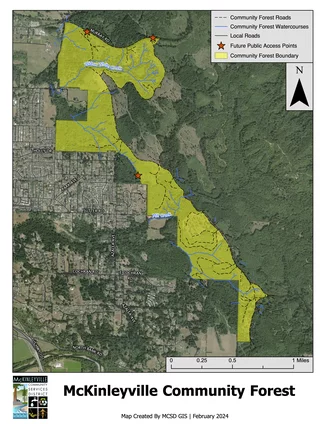
A map of the McKinleyville Community Forest (click to enlarge). McKinleyville Community Services District website.
The property is long and skinny – stretching from Murray Road to just north of North Bank Road – with town to the west and Green Diamond-owned land to the east. It’s primarily filled by second and third growth Sitka spruce, redwood and Douglas fir. Three-quarters of the trees are under 30 years old, and some areas were harvested as recently as 2017. The property overlaps the Widow White Creek and Mill Creek watersheds, and is home to at least seven species considered rare, threatened or of special concern. Nearly 11 miles of logging roads cut through the forest, and some of them lead into private land still owned by Green Diamond, though the boundaries aren’t always clear.
For an unincorporated town with a full-time parks and recreation staff of three, whipping the thing into shape is a big undertaking; it’s the first community forest owned by a community services district in California. And between mapping out a trail network, building necessary infrastructure and just waitin’ for the trees to grow, the forest is easily more than a decade from realizing its full potential.
A sign in the to-be-opened parking lot on Murray Road. Photo: Jacquelyn Opalach
Even so, eager community members have been calling up and popping by the McKinleyville parks and recreation office, asking: “Hey! When are you gonna put trash bins in? How about restrooms?” (One such McKinleyville-an was visiting the office for a status update when this reporter arrived for an interview with Parks and Recreation Director Kirsten Messmer, who stepped into her role at the beginning of July.)
“We’re at step one,” Messmer said during the interview. “So it’s really exciting. But it’s also like: Okay, we need to create this plan to guide where we want to go.”
That plan will be shaped by the McKinleyville Community Forest Committee, which met for the first time in July. Its job is to recommend actions to the McKinleyville Community Services District Board of Directors, the unincorporated town’s elected government body that oversees water and sewer, street lighting and parks and recreation (other sectors are under the county’s jurisdiction).
The committee is big – 14 members (at the moment) and three alternates – composed of forest and natural resource professionals and members of the public. Two non-voting seats are filled by MCSD board members, and a currently empty 15th seat will be filled by a representative from the Wiyot Tribe. A few subcommittees will form to focus on the forest’s bigger priorities – like funding and security – and those subcommittees will have seats for community members.
“I feel really great about how many committee members we have,” Messmer said. “People are interested in being a part of the project and have a lot of knowledge and expertise that lends to this. So that’s really exciting.”
At its inaugural meeting, the committee discussed priorities for the forest. The to-do list is long, but step one is obvious, Messmer said at the meeting: developing a management plan and mapping out a trails plan.
The management plan will be a blueprint for the forest. It will grow from a 116-page framework plan that was prepared for MCSD by the forestry consulting firm BBW & Associates back in 2021. The framework plan preliminarily explores long-term goals and management ideas for the forest.
Meanwhile, phase one of the forest’s first official trail is already complete.
The beginning of Scroll Keeper, the forest’s first trail. Photo: Jacquelyn Opalach
In April, MCSD established a memorandum of understanding (MOU) with the Mountain Bike Tribal Trail Alliance (MBTTA) – a non-profit of the Humboldt Skatepark Collective and a partner of Two Feathers Native American Family Services and the Warrior Institute – to identify and develop multi-use trails in the forest. Founded earlier this year by Shaun Fyfe, a mountain bike enthusiast and veteran, MBTTA introduces Native American youth to the sport. (MCSD also signed an MOU with the Redwood Coast Mountain Bike Association, but that organization hasn’t done any work in the McKinleyville Community Forest yet.)
[UPDATE, 3 p.m.: After this post was published, RCMBA Board Member Sean Tetrault emailed the Outpost to say the organization “was part of the process of laying out the conceptual trail plans that the MCSD used with Green Diamond” during the permitting process. “I and other volunteers spent hours working on maps and in conversations trying to help facilitate this great community addition,” he said. Regarding the community forest and its network of trails, Tetrault added, “It’s a great addition to the community and we are all excited to see MCSD make it a success.”]
“The first thing you gotta do is go walking through the woods where there never was anything – which is really fun – but it’s a lot of labor and a lot of exploring before you find anything that’s even usable,” Fyfe said in an interview with the Outpost.
Although the forest contains unofficial trails created by former trespassers on foot or bike, many of the routes are ecologically damaging or unsafe to use, Messmer said. While some existing trails might be restored, MBTTA is currently identifying completely new routes, allowing MCSD to direct trail development exactly as it sees fit.
MBTTA completed phase one of the forest’s first MCSD-approved trail last month. Starting at the marked Murray Road access point, it’s a mile-long route called Scroll Keeper that runs alongside the road. The trail is open and ready to use by hikers, bikers and equestrians, but MBTTA plans to improve mountain bike features along the trail in the near future. (The trail isn’t marked yet; find it to the right after crossing the gate at the Murray Road access point.)
Scroll Keeper closely follows Murray Road. Photo: Jacquelyn Opalach
Scroll Keeper. Photo: Jacquelyn Opalach
“[It’s] kind of like the backbone of the network,” Fyfe said. “Everything that we’re going to be building is going to come off of that trail.”
Now MBTTA is working on jump lines exclusively for mountain biking, and has identified five other potential multi-use trail routes. If approved, these trails would total around six to eight miles, stretching throughout the forest and creating a foundational network from which future trails may sprout. Fyfe plans to present the five new routes to the committee at a future meeting.
The in-progress jump track. Photo: Jacquelyn Opalach
Trails may be the most popular feature of a community forest, but McKinleyville is looking at a long list of other needs, too.
Security is perhaps the stickiest of challenges facing MCSD as it aims to develop the forest, which has been the site of illegal activities of varying severity since long before the land transfer. Historically, people have dumped loads of garbage or abandoned entire cars, built unauthorized trails, driven off-highway vehicles, and used the property for shooting practice.
Just last week, someone managed to lodge their car inside the jump track MBTTA is currently building, severely damaging the trail, Fyfe said. The disruption was a big hit to the community, he added, given the thousands of dollars’ worth of labor and equipment people have donated to help develop the track.
Overall, though, Fyfe thinks that people have started to respect the property more now that it’s a community forest.
“Since we got the MOU, it’s been kind of known that we’re developing this. So we’ve noticed a really positive change, and that’s been really great,” Fyfe said. “We’ve made incredible progress.”
Enforcing MCSD’s rules and regulations – no weapons, no overnight camping, no fires – is beyond the scope of MCSD staff, Messmer said. MCSD will clean up trash and “patrol” the forest for potential issues, but enforcing most of them will be up to the Humboldt County Sheriff’s Office.
In addition to trails and security, the committee scratched the surface of other priorities for the forest, like budget, restoration, equipment needs and entrance point development. The committee meets on the third Tuesday of each month at 5:30 p.m. in the Azalea Hall Hewitt Room, located at 1620 Pickett Road, McKinleyville, but folks can also participate on Zoom. Messmer said those who want to stay in the loop can also call the parks and recreation office at (707) 839-9003 to sign up for a community forest email blast list.
“Yes: it’s awesome. It’s gonna be really cool to see what all we develop out there and how it all comes together, and how the community keeps coming together to make things happen,” Messmer said.
“But we definitely need to make a plan with intention and with the help of our very specialized committee members, reach out to the public, see what’s important to them, and then utilize that plan as we move forward.”
“I am taking everything one day at a time,” she said, again noting the long road ahead. “We’ll get there.”
In the meantime: There is a lovely panoramic view of town and the ocean from a logging road on the property’s northern border, just steps from the Murray Road access point. It’s worth checking out.
Photo: Jacquelyn Opalach
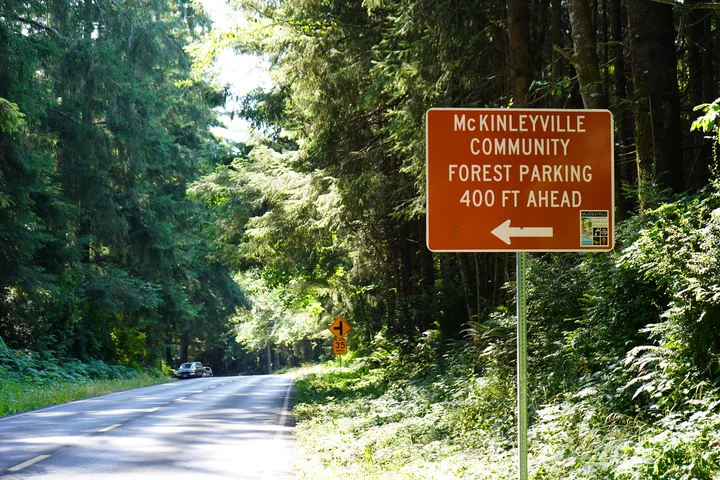
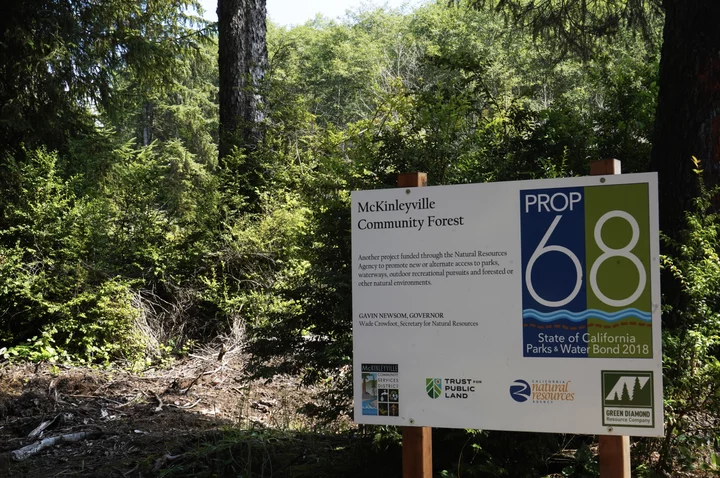
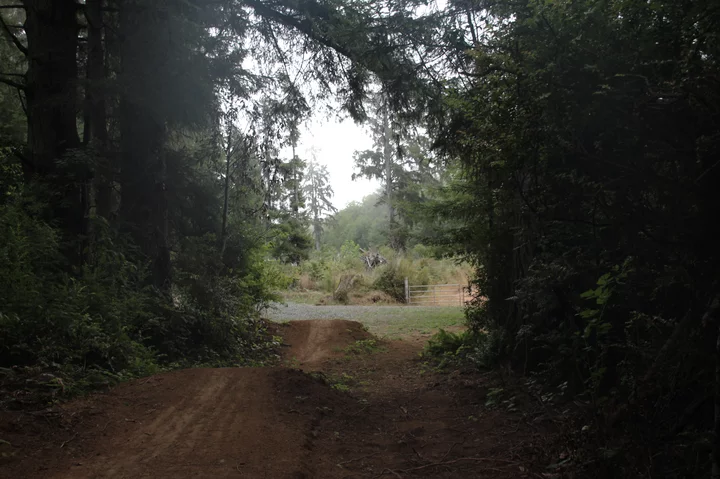
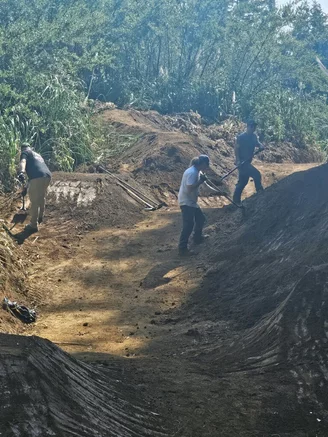
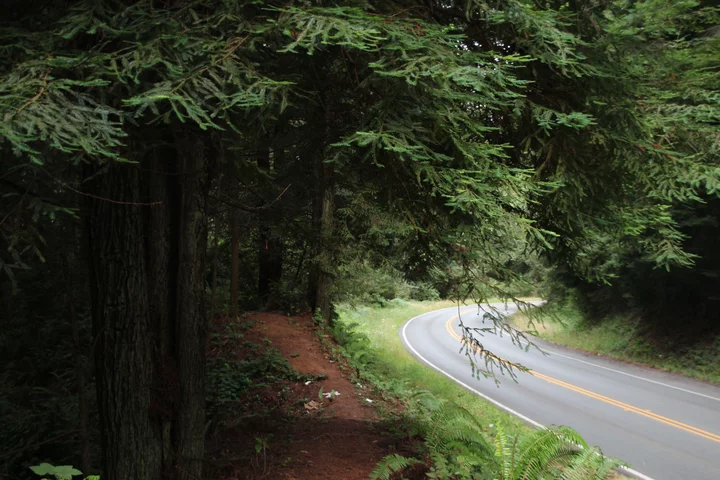
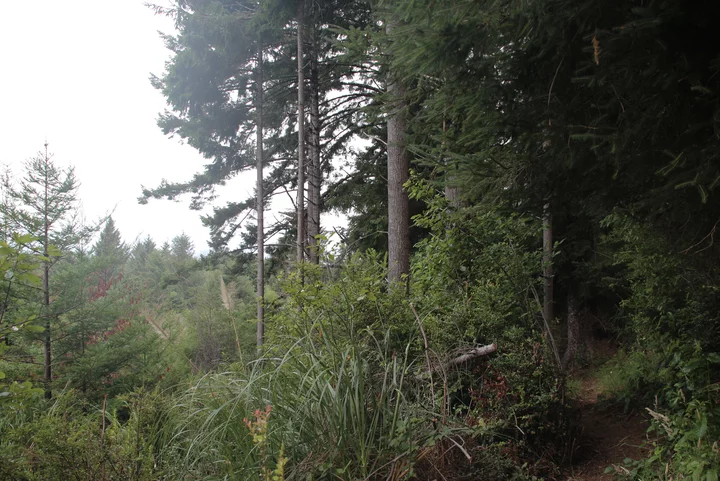
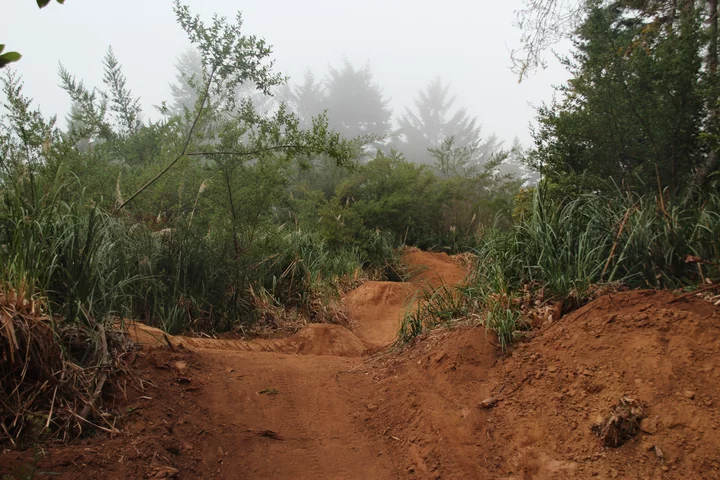
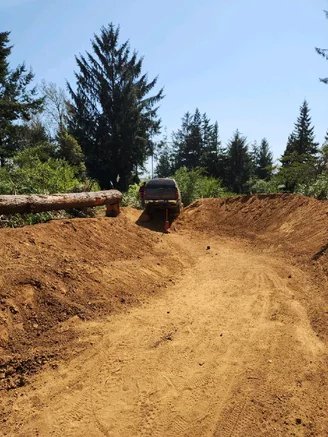
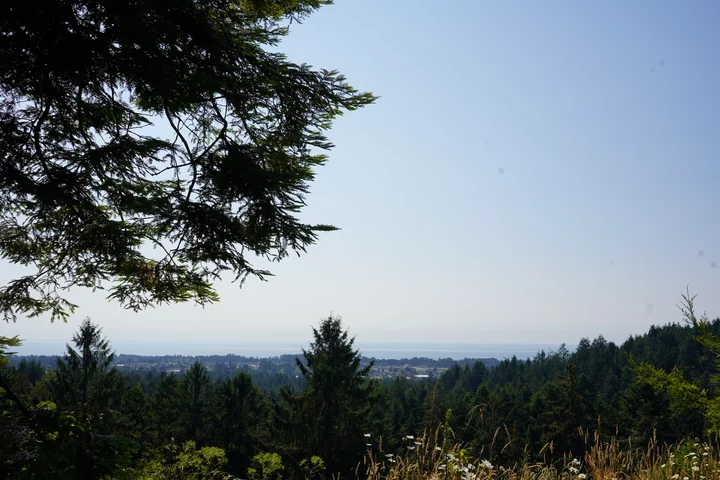
CLICK TO MANAGE